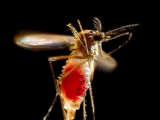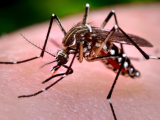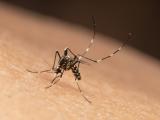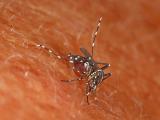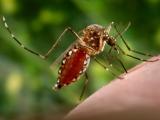Findings from three new Zika genome studies add more pieces to the puzzle about how the virus became established in Brazil and spread through the Americas, and all carry the common theme that Zika was already present long before it was detected in humans.
The studies, all published in the latest issue of Nature today, dovetail with each other and represent extensive collaboration between research institutions and governments and the use of nearly real-time genetic sequencing directly from patient samples, arming outbreak investigators with valuable, more timely information.
One of the studies looked at the genetic family trees of Zika viruses from Florida, revealing at least four introductions into the state, all from the Caribbean.
Rapid spread in Brazil, then division into clades
In one study, a large international team that included the Broad Institute of MIT and Harvard University put together a database of 110 complete or partial Zika virus genomes from patients in 10 countries and territories, the largest so far, comparing them with 64 published and publicly shared genomes. The study was partly supported by the US National Institute of Allergy and Infectious Diseases (NIAID).
New lab and analysis methods developed by the researchers helped overcome challenges in sequencing the Zika virus. Before the study, few Zika genomes had been generated, because the virus is usually present in low levels in clinical samples and disappears quickly.
Hayden Metsky, a study co-first author and graduate student at Harvard University, said in an MIT press release, "We knew it was important to understand the viral populations driving the epidemic, which motivated us to tackle the challenges of sequencing Zika." He added that the data and findings will also support the development of better diagnostic tests and surveillance tools.
Based on the changes they saw, the team said the Zika spread rapidly after it was introduced to northeast Brazil, probably sometime in 2013, a year before the first cases were confirmed in that country.
Then during the early-to-mid 2015 the virus separated into at least three clades in Colombia, Honduras, and Puerto Rico. Similar to Brazil, in those countries the virus probably arrived 4.5 to 9 months before the first local infections were confirmed. A fourth type was found in the Caribbean and continental United States.
A 'hidden outbreak' in northeast Brazil
Another study details the analysis of 54 complete or partial Zika genomes, mostly from Brazil. In June 2016, researchers traveled about 1,240 miles across northeastern Brazil in a minibus outfitted with a cutting-edge mobile DNA sequencing system, which allowed them to test samples from more than 1,000 patients infected with Zika.
The portable sequencer, made by Oxford Nanopore Technologies, weighs less than 100 grams and is powered by the USB port of a laptop computer.
Nick Loman, PhD, study coauthor and research fellow at the University of Birmingham School of Biosciences, said in a University of Oxford press release, "We developed a new protocol that allows for real-time genomic sequencing—something of vital importance when managing viral outbreaks, as it can provide real insight into how a virus is spreading, transmitting and evolving."
Analysis of the Brazilian samples found that the virus was present in the country a full year before the first cases were confirmed in May 2015.
Oliver Pybus, PhD, study coauthor and professor at the University of Oxford's Department of Zoology, said in the press release that the northeastern region was the country's epidemic nexus and played a key role in its spread to major Brazilian urban centers, such as Rio de Janeiro and Sao Paulo, before spreading across the Americas. "We how have a better understanding of the epidemiology of the virus."
The research team, which also includes scientists from Brazil's Fiocruz Institute, will expand its investigation to other parts of Brazil, with the hope of shedding more light on the spread of three other mosquito-borne diseases: dengue, chikungunya, and yellow fever.
A 'perfect storm' for spread in Miami
Many of the same researchers were involved in an analysis of Zika genomes from patients sickened at several points in Florida's outbreak and from mosquitoes. They used the newly developed protocols to sequence virus from 28 of Florida's 256 cases, as well as from seven mosquito pools.
Local transmission probably began in the spring of 2016, several months before the first cases were detected in the Miami area, the researchers said. They found at least 4—and as many as 40—introductions into Florida last year. Most of the lineages were related to Zika strains found in the Caribbean.
Also, they determined that Zika moved among transmission zones in Miami.
Nathan Grubaugh, PhD, lead author of the study and research associate at The Scripps Research Institute (TSRI) calls the conditions in Miami a "perfect storm" for the spread of Zika virus. In a TSRI press release, he said, "This study shows why Miami is special."
The city is home to year-round populations of Aedes aegypti mosquitoes that spread Zika virus and is an important international travel hub, which in 2016 saw more international air and sea traffic than any other city in the continental United States. The team found that of 5.7 million international travelers that arrived in Miami by planes or cruise ships from January to June of 2016, more than half arrived from the Caribbean.
The investigators believe that Zika may have started transmission in Miami as many as 40 times, but most travel-related cases didn't result in any secondary infections. The factor that limited spread was mosquito control efforts, the group found.
Kristian Andersen, PhD, study coauthor and director of infectious disease genomics at Scripps Translational Science Institute, said in the TSRI press release that analysis shows a proportional decrease in mosquito populations and the number of Zika infections, affirming that a focus on mosquito control can significantly limit the risk.
"This is not too surprising, but it's important to show that there is an almost perfect correlation between the number of mosquitoes and the number of human infections," he said
In another key finding, splitting Miami into designated Zika transmission zones didn't accurately depict how the virus was moving. The researchers found a mix of multiple Zika lineages within each zone, hinting that the virus wasn't well contained and that it probably moved around with infected people.
See also:
May 24 Nature study analyzing 174 Zika genomes from 10 countries and territories
May 24 NIAID press release
May 24 MIT press release
May 24 Nature study on 54 Zika genomes, primarily from Brazil
May 24 Oxford University news release
May 24 Nature study on multiple Zika introductions into the United States
May 24 TSRI press release


